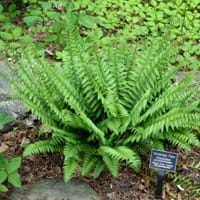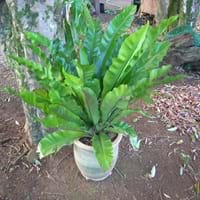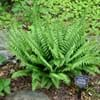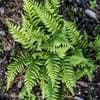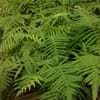Life Span
Perennial
Perennial
Origin
North America, Northeastern United States
Hawaii, Middle Africa, Southern Asia, Polynesia
Types
Not Available
Asplenium trichomanes, Asplenium scolopendrium, Asplenium rutamuraria
Number of Varieties
Not Available
Habitat
Boggy areas, By seashore, Coastal Regions, Moist woods, Swamps
Terrestrial, tropical environments
USDA Hardiness Zone
3-8
10-11
Sunset Zone
1a, 1b, 2a, 2b, 3a, 3b, 4, 5, 6, 8, 9, 14, 15, 16, 17, 18, 19, 20, 21, 22, 23, 24
H2, 23, 24
Habit
Clump-Forming
Upright/Erect
Flower Color
Not Available
Not Available
Flower Color Modifier
Bicolor
Bicolor
Fruit Color
Not Available
Not Available
Leaf Color in Spring
Green
Green, Yellow green
Leaf Color in Summer
Green, Dark Green
Green, Yellow green
Leaf Color in Fall
Green, Dark Green
Green, Yellow green
Leaf Color in Winter
Dark Green
Green, Yellow green
Leaf Shape
Pinnate
Narrow
Plant Season
Spring, Summer, Fall, Winter
Spring, Summer, Fall, Winter
Sunlight
Full Sun, Partial shade
Bright Indirect Sunlight, Indirect sunlight
The pH of Soil
Acidic, Neutral
Acidic, Neutral
Soil Drainage
Average
Well drained
Bloom Time
Indeterminate
Not Available
Tolerances
Drought, Wet Site
Not Available
Where to Plant?
Container, Ground
Container, Ground, Pot
How to Plant?
Divison, Spores
Spores
Plant Maintenance
Medium
Medium
Watering Requirements
Requires a lot of watering, Requires regular watering, Requires watering in the growing season, Water Deeply
Do Not over Water, Keep ground moist, Reduce watering in winter
In Summer
Lots of watering
Lots of watering
In Spring
Moderate
Moderate
In Winter
Average Water
Average Water
Soil pH
Acidic, Neutral
Acidic, Neutral
Soil Drainage Capacity
Average
Well drained
Sun Exposure
Full Sun, Partial shade
Bright Indirect Sunlight, Indirect sunlight
Pruning
Remove damaged leaves, Remove dead branches, Remove dead leaves
Remove damaged leaves, Remove dead branches, Remove dead leaves, Remove dead or diseased plant parts
Fertilizers
All-Purpose Liquid Fertilizer
All-Purpose Liquid Fertilizer, Balanced liquid fertilizer, fertilize every 2-3 weeks while growing, fertilize in spring, fertilize in summer, Put diluted fertilizers
Pests and Diseases
Red blotch
Red blotch
Plant Tolerance
Drought
Drought
Flower Petal Number
Single
Single
Foliage Texture
Medium
Coarse
Foliage Sheen
Matte
Glossy
Attracts
Insects
Hummingbirds
Allergy
Avoid during Pregnancy, coma, Eye irritation, weakness
Toxic
Aesthetic Uses
Beautification, Landscape Designing, Showy Purposes
Showy Purposes
Beauty Benefits
Not Available
Not Available
Environmental Uses
Air purification
Air purification, Indoor Air Purification
Medicinal Uses
Nutrients
General weakness in children, Mouth Sores
Part of Plant Used
Leaves
Not Available
Other Uses
Air freshner, Decoration Purposes, Employed in herbal medicine, Showy Purposes, Used for its medicinal properties
Used as Ornamental plant
Used As Indoor Plant
Yes
Yes
Used As Outdoor Plant
Yes
Yes
Garden Design
Groundcover, Mixed Border, Rock Garden, Wall
Container, Feature Plant, Hanging Basket, Houseplant, Rock Garden, Wall, Tropical
Botanical Name
POLYSTICHUM acrostichoides
ASPLENIUM nidus
Common Name
Not Available
Birds Nest Fern, Pakpak-lauin
In Hindi
Christmas Fern
घोंसला फ़र्न
पौधा
In German
Christmas Fern
Vogelnest Farn
Pflanze
In French
polystic faux-acrostic
Nest Fern Bird
Plante
In Spanish
Christmas Fern
Helecho nido de pájaro
Planta
In Greek
Christmas Fern
Φωλιά του Πουλιού Fern
Φυτό
In Portuguese
Christmas Fern
Fern do ninho do pássaro
Plantar
In Polish
Christmas Fern
Ptasie Gniazdo Fern
Roślina
In Latin
Christmas Fern
Bird 's Nest Fern
planta
Phylum
Filicinophyta
Pteridophyta
Class
Filicopsida
Filicopsida
Order
Filicales
Polypodiales
Family
Dryopteridaceae
Aspleniaceae
Genus
Polystichum
Asplenium
Clade
Not Available
Not Available
Tribe
Not Available
Not Available
Subfamily
Not Available
Not Available
Number of Species
Not Available
Properties of Christmas Fern and Bird's Nest Fern
Wondering what are the properties of Christmas Fern and Bird's Nest Fern? We provide you with everything About Christmas Fern and Bird's Nest Fern. Christmas Fern doesn't have thorns and Bird's Nest Fern doesn't have thorns. Also Christmas Fern does not have fragrant flowers. Christmas Fern has allergic reactions like Avoid during Pregnancy, coma, Eye irritation and weakness and Bird's Nest Fern has allergic reactions like Avoid during Pregnancy, coma, Eye irritation and weakness. Compare all the properties and characteristics of these two plants. Find out which of these plant can be used as indoor plant. If you are interested to decorate your house and garden, find out aesthetic uses, compare them and select the plant which will beautify your surrounding. Along with beautification, try comparing medicinal and edible uses of Christmas Fern and Bird's Nest Fern and you can choose the plant having best and most benefits.
Season and Care of Christmas Fern and Bird's Nest Fern
Season and care of Christmas Fern and Bird's Nest Fern is important to know. While considering everything about Christmas Fern and Bird's Nest Fern Care, growing season is an essential factor. Christmas Fern season is Spring, Summer, Fall and Winter and Bird's Nest Fern season is Spring, Summer, Fall and Winter. The type of soil for Christmas Fern is Loam and for Bird's Nest Fern is Loam while the PH of soil for Christmas Fern is Acidic, Neutral and for Bird's Nest Fern is Acidic, Neutral.
Christmas Fern and Bird's Nest Fern Physical Information
Christmas Fern and Bird's Nest Fern physical information is very important for comparison. Christmas Fern height is 30.50 cm and width 45.70 cm whereas Bird's Nest Fern height is 120.00 cm and width 90.00 cm. The color specification of Christmas Fern and Bird's Nest Fern are as follows:
Christmas Fern flower color: Not Available
Christmas Fern leaf color: Green
Bird's Nest Fern flower color: Not Available
- Bird's Nest Fern leaf color: Green and Yellow green
Care of Christmas Fern and Bird's Nest Fern
Care of Christmas Fern and Bird's Nest Fern include pruning, fertilizers, watering etc. Christmas Fern pruning is done Remove damaged leaves, Remove dead branches and Remove dead leaves and Bird's Nest Fern pruning is done Remove damaged leaves, Remove dead branches, Remove dead leaves and Remove dead or diseased plant parts. In summer Christmas Fern needs Lots of watering and in winter, it needs Average Water. Whereas, in summer Bird's Nest Fern needs Lots of watering and in winter, it needs Average Water.
